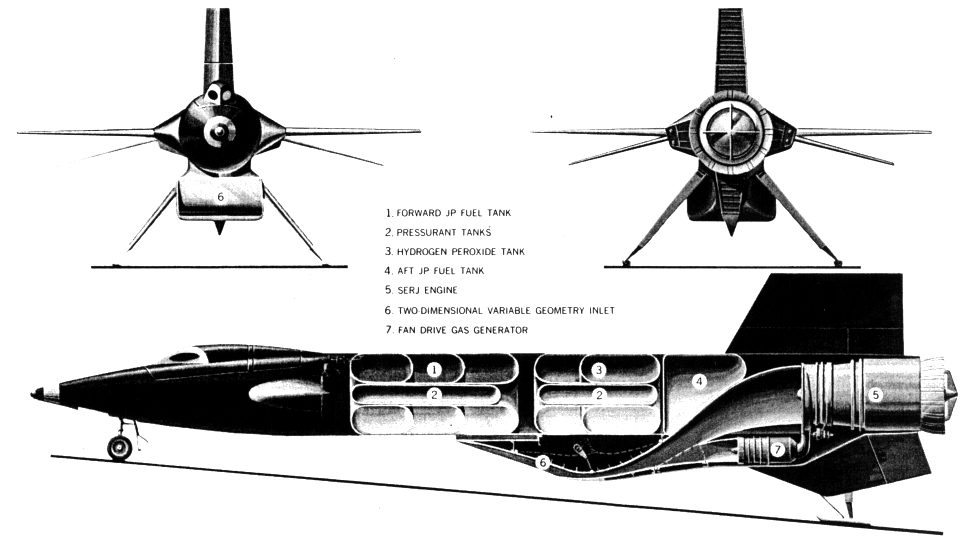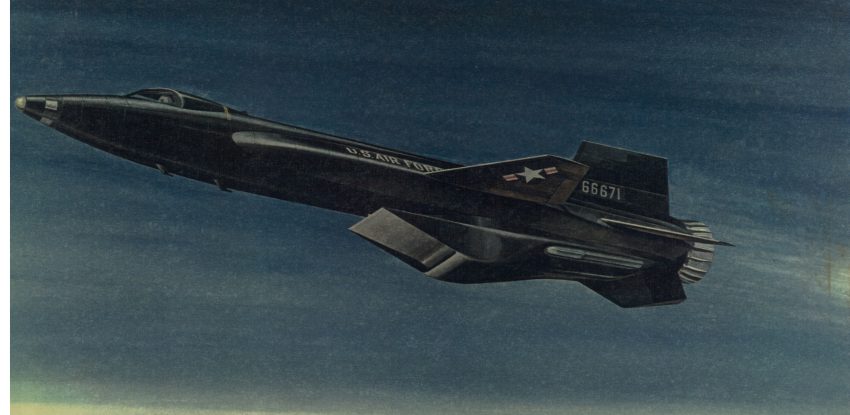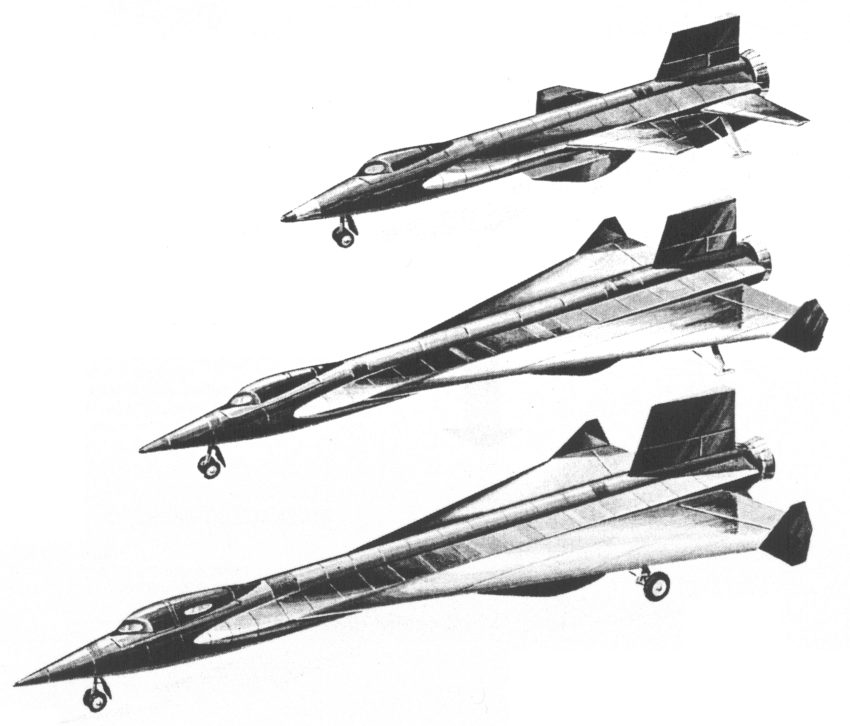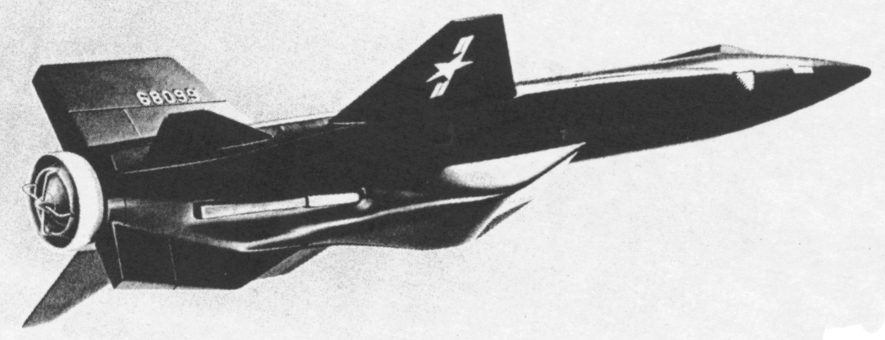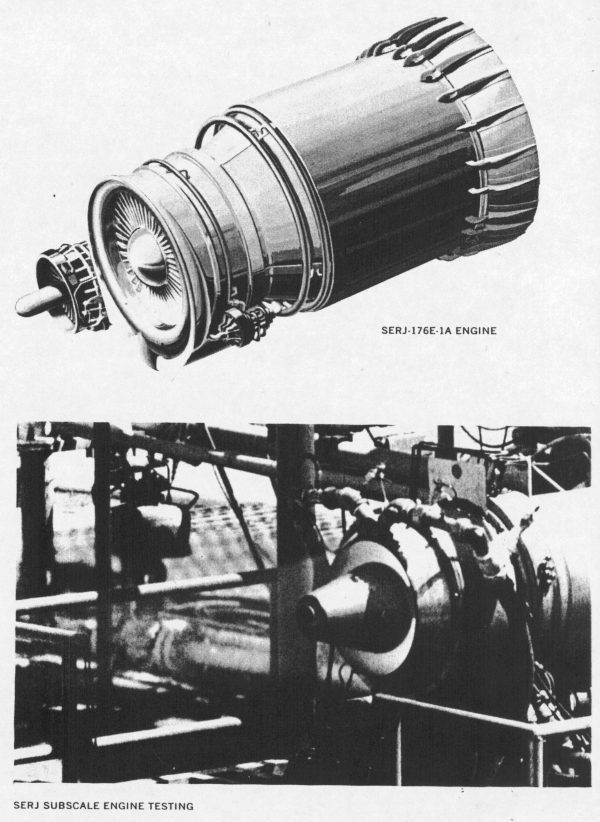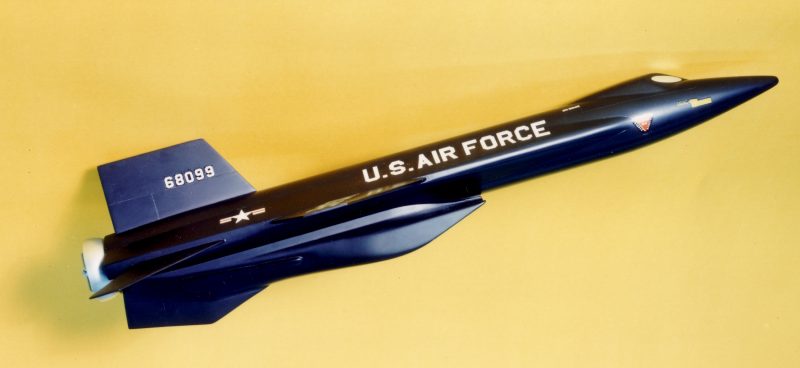The SERJ engine would burn JP fuel and hydrogen peroxide oxidizer, eliminating the need for cryogenic equipment. The modified X-15 would be carried to altitude beneath the wing of the existing B-52 carrier plane. No in-flight oxidizer topping would be needed. Due to the deep throttling capability of the SERJ engine, it could be started while still attached to the carrier aircraft pylon.
Figure 1: inboard views of the SERJ-equipped X-15
Marquardt via W. Escher
Figure 2: Artists impression of the SERJ equipped X-15 (Leo Skubic, Marquardt)
Marquardt via W. Escher
Figure 3:North American had produced designs of a stretched and delta winged X-15 (the middle design). Marquardt expected that this aircraft could also be equipped with a SERJ engine, producing greater performance. Further improvements still could be had by stretching the delta X-15, and adding a second crewman. Performance enhancement was not in speed or altitude, but in duration. An aircraft beyond this would be a truly operational military vehicle.
Marquardt via W. Escher
Figure 4: SERJ-equipped X-15 display model
Marquardt via W. Escher
Figure 5: Top: The SERJ-176-E-1A engine was remarkably compact.
Bottom: Marquardt and Aerojet built and successfully static tested subscale SERJ engines.
Marquardt via W. Escher
Figure 6: SERJ-equipped X-15 display model
From Boeing Historical Archives
Figure 7: SERJ-equipped X-15 display model
From Boeing Historical Archives
Reference: " X-15 SERJ Precursor to Mach 4-plus," unpublished prelimianry brochure, The Marquardt Company, June 1969
Issues of Aerospace projects Review can be purchased individually, or in any number. More on that HERE.

Back to APR Extras main page.

Aerospace Projects Review
11305 W 10400 N
Thatcher, Utah, 84337, U.S.A.
Contact me by e-mail
scottlowther AT ix DOT netcom DOT com.
You will need to delete the spam-blocking capitalized bits in the e-mail address. It's clumsy, annoying and definitely non-professional looking... but unfortunately, spammers read email addresses and target you for massive amounts of junk mail if you don't play little tricks.


